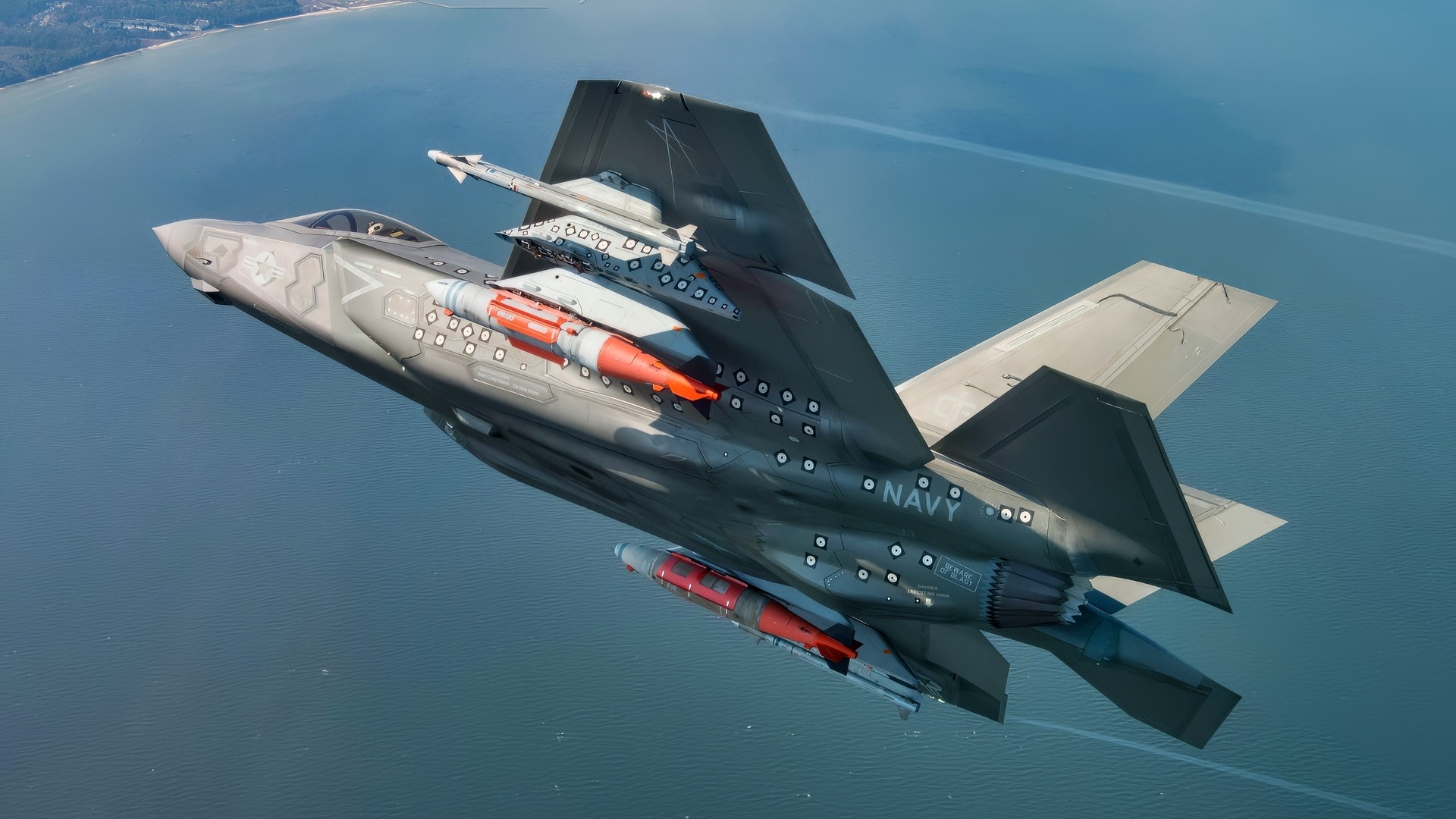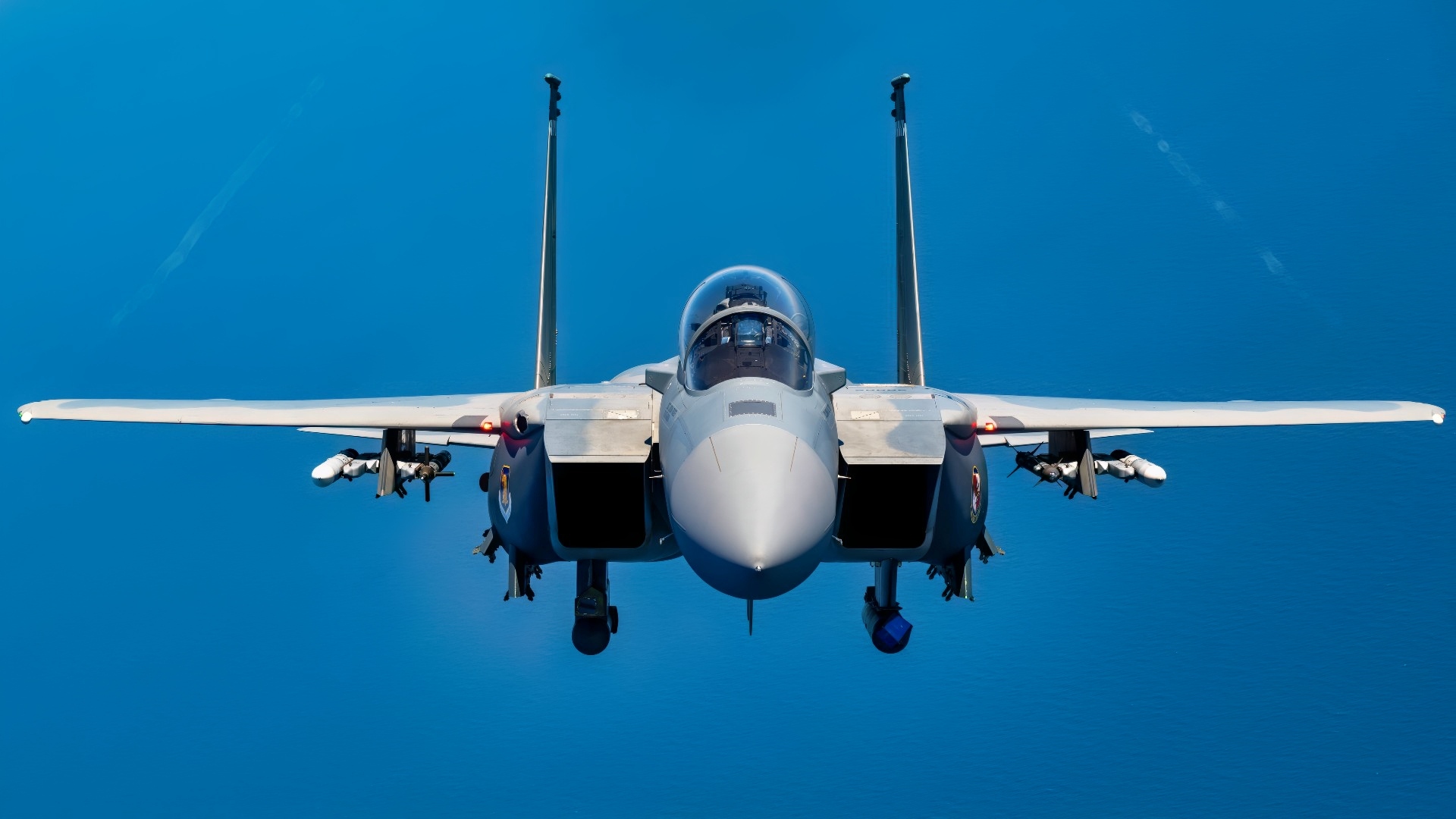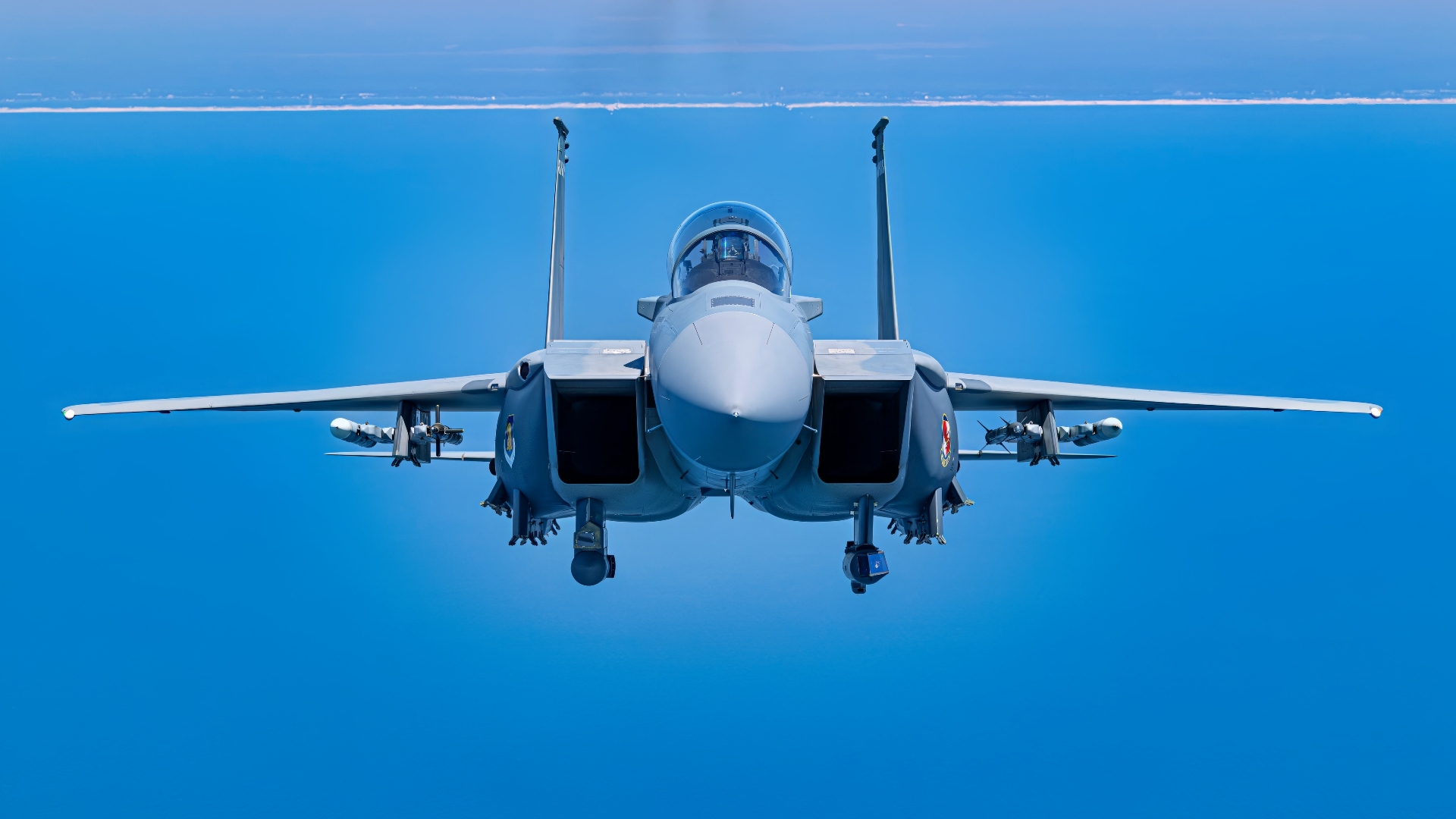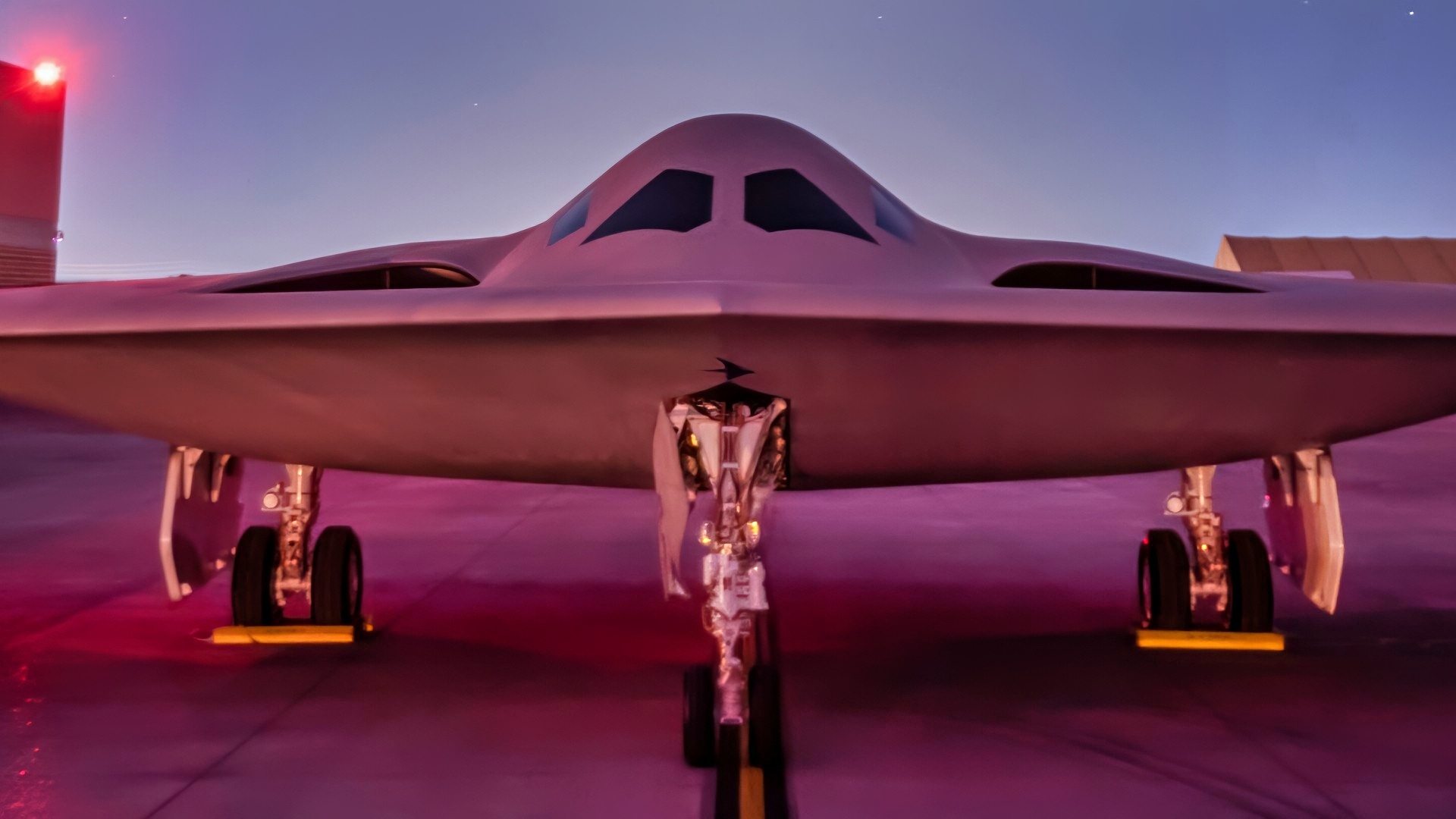Key Points and Summary – As the Pentagon races to field the B-21 Raider, F-47 NGAD fighter, SSN(X) subs and F/A-XX, Operation Midnight Hammer offered an unexpected answer to a big question: can today’s force bridge the gap?
-In a 125-aircraft strike on Iran, stealthy, upgraded B-2s escorted by modernized F-35s slipped past Russian-made air defenses, shredded drones and missile sites, and reportedly were never detected.

The final SDD Test flight CF-2 Flt 596 was piloted by BAE Test pilot Peter Wilson, April 11, 2018, from the F-35 Pax River Integrated Test Force. The F-35C completed a mission to collect loads data while carrying external 2,000-pound GBU-31 Joint Direct Attack Munitions (JDAM) and AIM-9X Sidewinder heat-seeking missiles. (Photo courtesy of Lockheed Martin)
-The mission highlighted how legacy platforms transformed by AI-enabled processing, new sensors, EW suites and long-range weapons can still dominate.
-The future fleet is urgent—but Midnight Hammer showed the “old” air arsenal is far from obsolete.
Before the B-21 and F-47 Arrive, America’s “Old” Jets Are Carrying the Load
The B-21 stealth bomber and F-47 sixth-generation fighter jet are already on the path toward entering service.
The SSN(X) attack submarine and F/A-XX naval fighter jet await. All of these promise to be paradigm-changing future platforms, but will they reach service soon enough?
Will they keep today’s force ready for tomorrow’s fight? This critical question occupies the minds of Pentagon planners.
Answers to the question can be found in the results of the highly successful Operation Midnight Hammer.
The mission demonstrated that upgraded current platforms already in service are highly effective, even before the integration of future tactics and technologies.
Upgraded B-2 bombers escorted by modernized F-35s flew in protected, highly effective formations. They proved able to elude detection and ensure that Iranian air defenses were destroyed or disabled.
Operation Midnight Hammer
The operation involved some 125 aircraft. The warbirds’ success showed that current platforms and upgraded legacy models can still guarantee air superiority in a modern threat environment.

A U.S. Air Force F-15EX Eagle II flies over the Gulf of America, September 16, 2025. The F-15EX, from the 40th Flight Test Squadron at Eglin Air Force Base, Florida, is one of the first F-15EXs in the Air Force, and is going through developmental and operational test series at Eglin to confirm its operational capabilities before it is delivered to the combat Air Force. (U.S. Air Force photo by Staff Sgt. Blake Wiles)

A U.S. Air Force F-15EX Eagle II flies over the Gulf of America, September 16, 2025. The F-15EX, from the 40th Flight Test Squadron at Eglin Air Force Base, Florida, is one of the first F-15EXs in the Air Force, and is going through developmental and operational test series at Eglin to prepare the platform to be delivered to the warfighter. (U.S. Air Force photo by Tech Sgt. Jacob Stephens)
Iran is known to operate large numbers of advanced attack drones, as well as Russian-built air defenses and a substantial arsenal of ballistic missiles, yet U.S. Defense Secretary Pete Hegseth said there were no indications that the B-2s were detected in any way during Operation Midnight Hammer.
There is little question that the next-generation platforms emerging now are seriously needed, and their production timelines are being accelerated accordingly.
Yet today’s force does seem capable of providing a more than serviceable bridge to the future.
With the integration of AI-enabled computer processing, new generations of weapons and sensors, and breakthrough data, communications, and command-and-control systems, many platforms seem capable of scaling up to manage a new threat environment.

Finland with F-35 fighter. Image Credit: Lockheed Martin.
In fact, even upgraded fourth-generation aircraft participated in Operation Midnight Hammer.
Legacy Upgrades
The evidence that integrating new technology changes existing platforms is far too vast to fully detail. New radar, avionics, sensing, and long-range weapons have been integrated into a wide range of platforms.
Today’s B-2 flies with a 1,000-fold faster computer processor, advanced sensing, and reconfigured command and control.
Today’s F-35 flies with a larger and more complex threat-data library, as well as software upgrades that enable longer-range, high-resolution sensing and the integration of paradigm-changing air-to-air and air-to-ground weapons.
Today’s B-52 will soon have a new engine, a reconfigured internal weapons bay, and the ability to launch drones and next-generation cruise missiles.

The B-21 Raider was unveiled to the public at a ceremony December 2, 2022 in
Palmdale, Calif. Designed to operate in tomorrow’s high-end threat environment, the B-21 will play a critical role in ensuring America’s enduring airpower capability. (U.S. Air Force photo)
Even fourth-generation platforms such as the F-15E have been configured with new AESA radar, computing, avionics, and weapons.
Recent technological breakthroughs in computing, sensing, weapons guidance, Electronic Warfare, and stealth take these platforms to entirely new levels of performance.
Tactical Elements of Modernization
Emerging technologies open up new concepts of operation and change maneuver formations.
For example, while operational details from Operation Midnight Hammer will not be made available, it seems the mission included previously unavailable technologies such as manned-unmanned teaming, advanced EW, and perhaps even some AI-enabled computing.
About the Author: Kris Osborn
Kris Osborn is the President of Warrior Maven – Center for Military Modernization. Osborn previously served at the Pentagon as a highly qualified expert in the Office of the Assistant Secretary of the Army—Acquisition, Logistics & Technology. Osborn has also worked as an anchor and on-air military specialist at national TV networks. He has appeared as a guest military expert on Fox News, MSNBC, The Military Channel, and The History Channel.
More Military
The U.S. Navy’s Constellation-Class Frigate Crisis Keeps Getting Worse
China’s New H-20 Stealth Bomber Might Have a 10,000 km Range
Even Mach 3 Speeds Could Not Save the Titanium SR-71 Blackbird
The U.S. Navy’s New DDG(X) Destroyer Is Sailing Into Stormy Waters










